Crusher Stand Vibration Analysis
We’ve recently completed a project in conjunction with RK Findlay Engineering, Global Crushers and Quarry Products Newcastle, assessing the dynamic and vibration response of a rock crusher stand using Finite Element Analysis (FEA). The stand is around 4m high, and supports a rock crusher weighing 27T, driven by an electric motor weighing around 2T.

We used a range of FEA techniques including modal analysis and frequency response analysis to gain an understanding of how the structure responds to dynamic imbalance and vibration loads at the crusher and motor. We also proposed and assessed design changes to improve the original stand design by moving the modal frequencies away from the operating frequencies of the machinery, thereby eliminating the potentially damaging effects of resonance on the structure.
Read on to learn more about the techniques we used, and how our clients benefited from using our FEA services during their design process…
Modal Analysis
Due to the cyclic vibration loads that can arise from rotating machinery such as the crusher and motor, we performed a modal analysis on the structure to see what frequencies its natural modes of vibration occurred at. If the modal frequencies of the structure are close to the operating frequencies of the rotating machinery, this can induce resonance within the structure, which in turn, leads to excessive vibration and significantly increased stresses. This is obviously something that should be avoided at all cost.
Below are some animations of the modeshapes for the major modal frequencies. These show the shape the structure takes when it vibrates at each specific frequency.
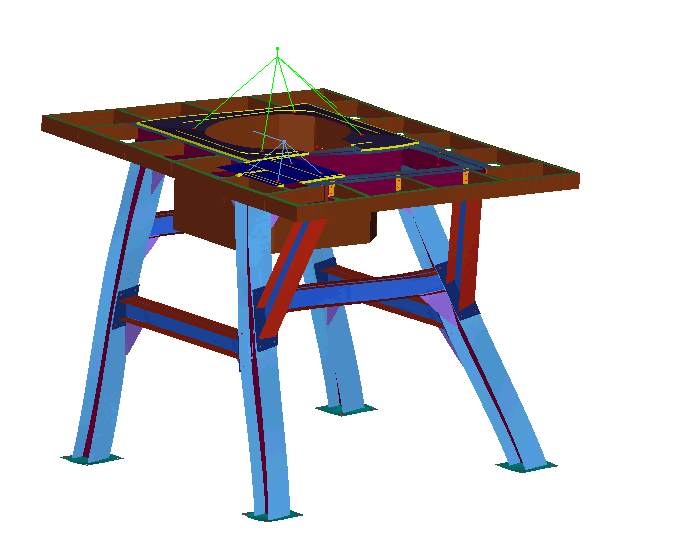
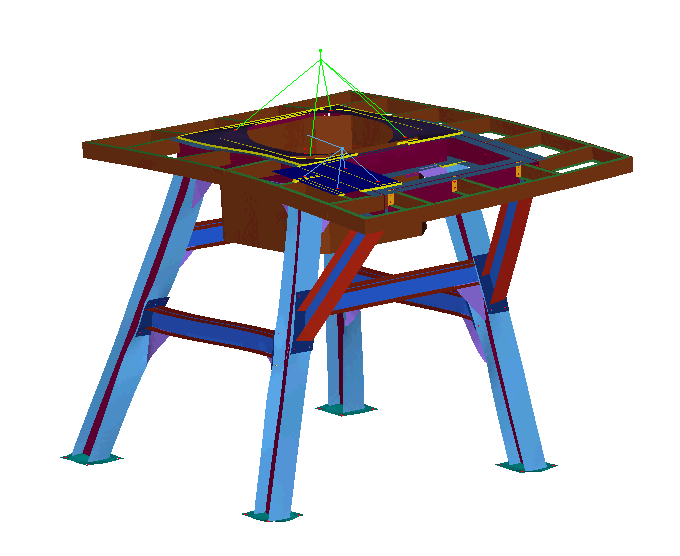
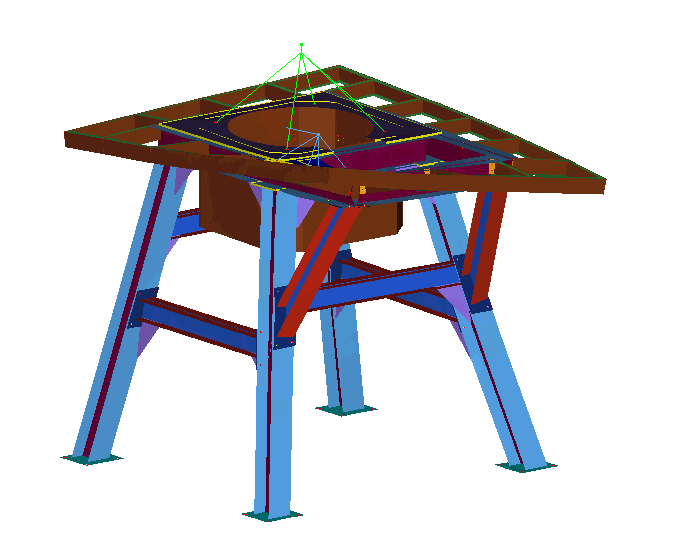
As it turned out, the original stand design had modal frequencies that were very close to both the crusher and motor operating frequencies. Frequency response analysis was then used to gain a better understanding of the structure’s response to dynamic loads.
Frequency Response Analysis
Frequency response analyses were run to determine the response levels of the structure when subjected to dynamic imbalance loads at the crusher and motor. Displacement, velocity and acceleration response at various locations were output and plotted across the frequency range of interest, and compared to a target values for human comfort requirements.
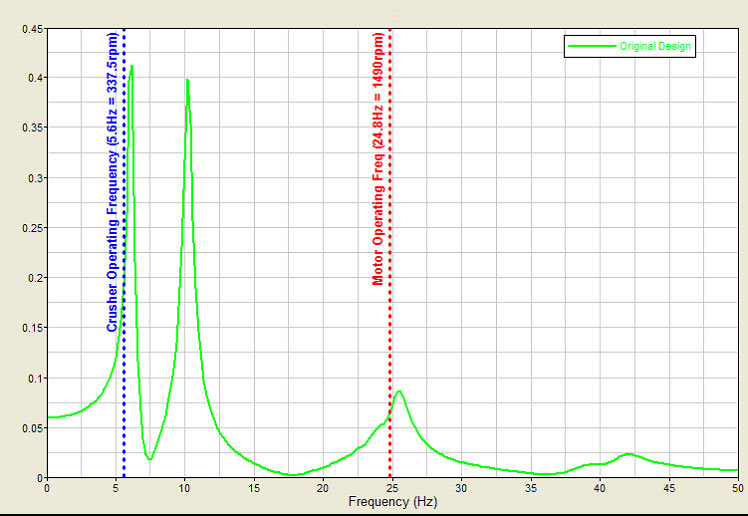
The plot above clearly shows how the frequency response sweep has significant peaks corresponding to the modal frequencies, very close to the operating frequencies (shown as vertical dotted lines).
We worked closely with our clients and proposed various changes to the design to increase the stiffness of the structure and move the modal frequencies higher, and away from the operating speeds. Some of the changes made included reducing the overall height of the stand, increasing the size of some of the sections used, and boxing in the I beam columns used on the legs. The plot below compares the frequency response sweeps of the original design and the revised design.
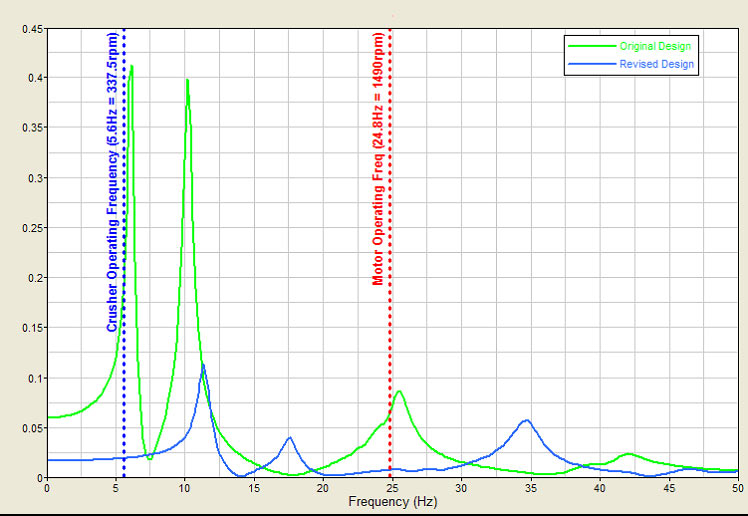
You can see that the peaks in the response plots for the final design are now at frequencies well above the crusher and motor operating frequencies, and the level of response has also dropped significantly. This represents a major improvement over the original design.
Dynamic Stress Analysis
Once we were happy with the modal frequencies and response, stresses within the structure due to a range of static and dynamic loadings were reviewed. This showed up some areas of high stress, which we were able to reduce with a few minor changes. The final design for the crusher stand was a significant improvement over the original design, which was likely to have had potentially damaging issues with excessive vibration.
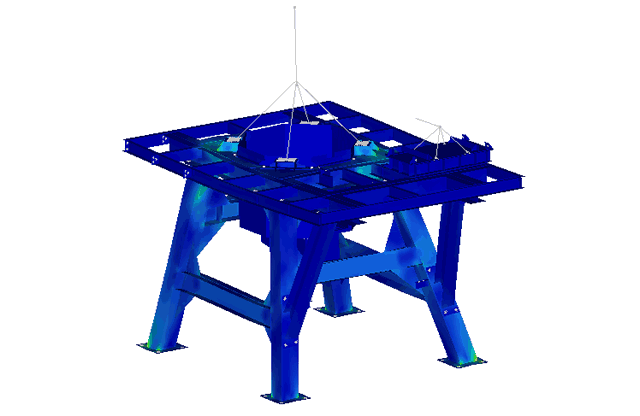
Rectifying such issues once the structure has been built would be an extremely expensive exercise, not to mention the cost of lost production due to machine down time. The use of FEA to assess, validate and improve the design before manufacture was of significant value to our clients, and this project reinforces both the importance and benefits of performing modal and frequency response analysis for any components or systems subjected to cyclic or vibrational loads.
RETURN TO CASE STUDIES

